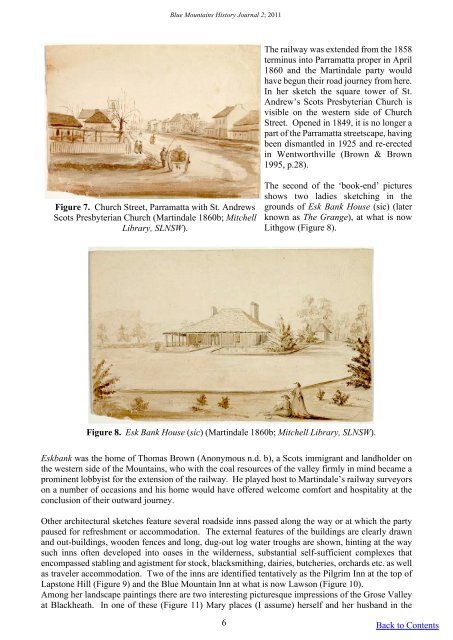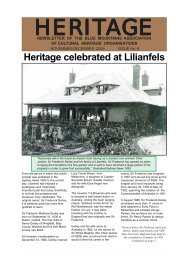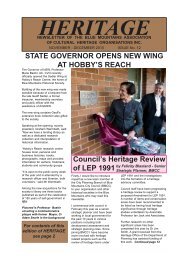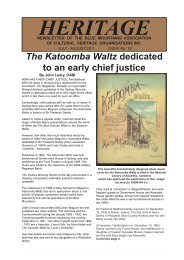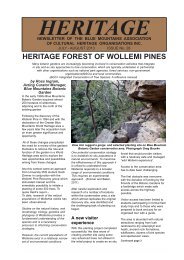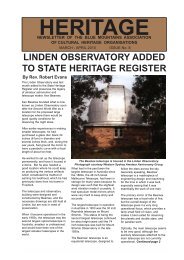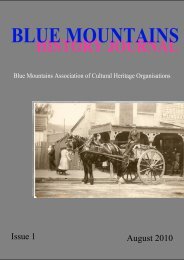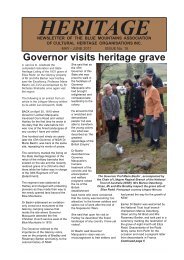Blue Mountains History Journal Issue 2
Blue Mountains History Journal Issue 2
Blue Mountains History Journal Issue 2
Create successful ePaper yourself
Turn your PDF publications into a flip-book with our unique Google optimized e-Paper software.
<strong>Blue</strong> <strong>Mountains</strong> <strong>History</strong> <strong>Journal</strong> 2; 2011<br />
The railway was extended from the 1858<br />
terminus into Parramatta proper in April<br />
1860 and the Martindale party would<br />
have begun their road journey from here.<br />
In her sketch the square tower of St.<br />
Andrew’s Scots Presbyterian Church is<br />
visible on the western side of Church<br />
Street. Opened in 1849, it is no longer a<br />
part of the Parramatta streetscape, having<br />
been dismantled in 1925 and re-erected<br />
in Wentworthville (Brown & Brown<br />
1995, p.28).<br />
Figure 7. Church Street, Parramatta with St. Andrews<br />
Scots Presbyterian Church (Martindale 1860b; Mitchell<br />
Library, SLNSW).<br />
The second of the ‘book-end’ pictures<br />
shows two ladies sketching in the<br />
grounds of Esk Bank House (sic) (later<br />
known as The Grange), at what is now<br />
Lithgow (Figure 8).<br />
Figure 8. Esk Bank House (sic) (Martindale 1860b; Mitchell Library, SLNSW).<br />
Eskbank was the home of Thomas Brown (Anonymous n.d. b), a Scots immigrant and landholder on<br />
the western side of the <strong>Mountains</strong>, who with the coal resources of the valley firmly in mind became a<br />
prominent lobbyist for the extension of the railway. He played host to Martindale’s railway surveyors<br />
on a number of occasions and his home would have offered welcome comfort and hospitality at the<br />
conclusion of their outward journey.<br />
Other architectural sketches feature several roadside inns passed along the way or at which the party<br />
paused for refreshment or accommodation. The external features of the buildings are clearly drawn<br />
and out-buildings, wooden fences and long, dug-out log water troughs are shown, hinting at the way<br />
such inns often developed into oases in the wilderness, substantial self-sufficient complexes that<br />
encompassed stabling and agistment for stock, blacksmithing, dairies, butcheries, orchards etc. as well<br />
as traveler accommodation. Two of the inns are identified tentatively as the Pilgrim Inn at the top of<br />
Lapstone Hill (Figure 9) and the <strong>Blue</strong> Mountain Inn at what is now Lawson (Figure 10).<br />
Among her landscape paintings there are two interesting picturesque impressions of the Grose Valley<br />
at Blackheath. In one of these (Figure 11) Mary places (I assume) herself and her husband in the<br />
6 Back to Contents


